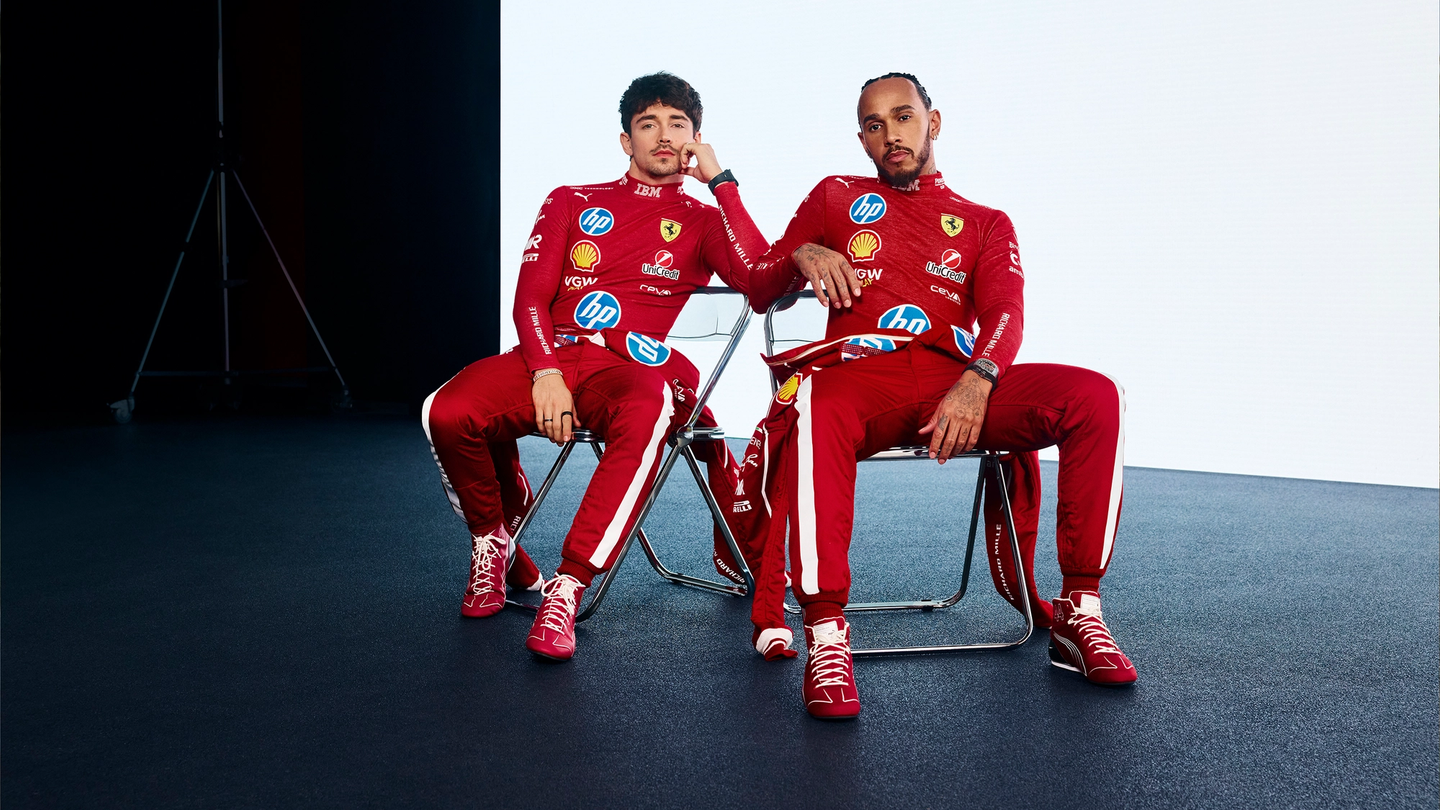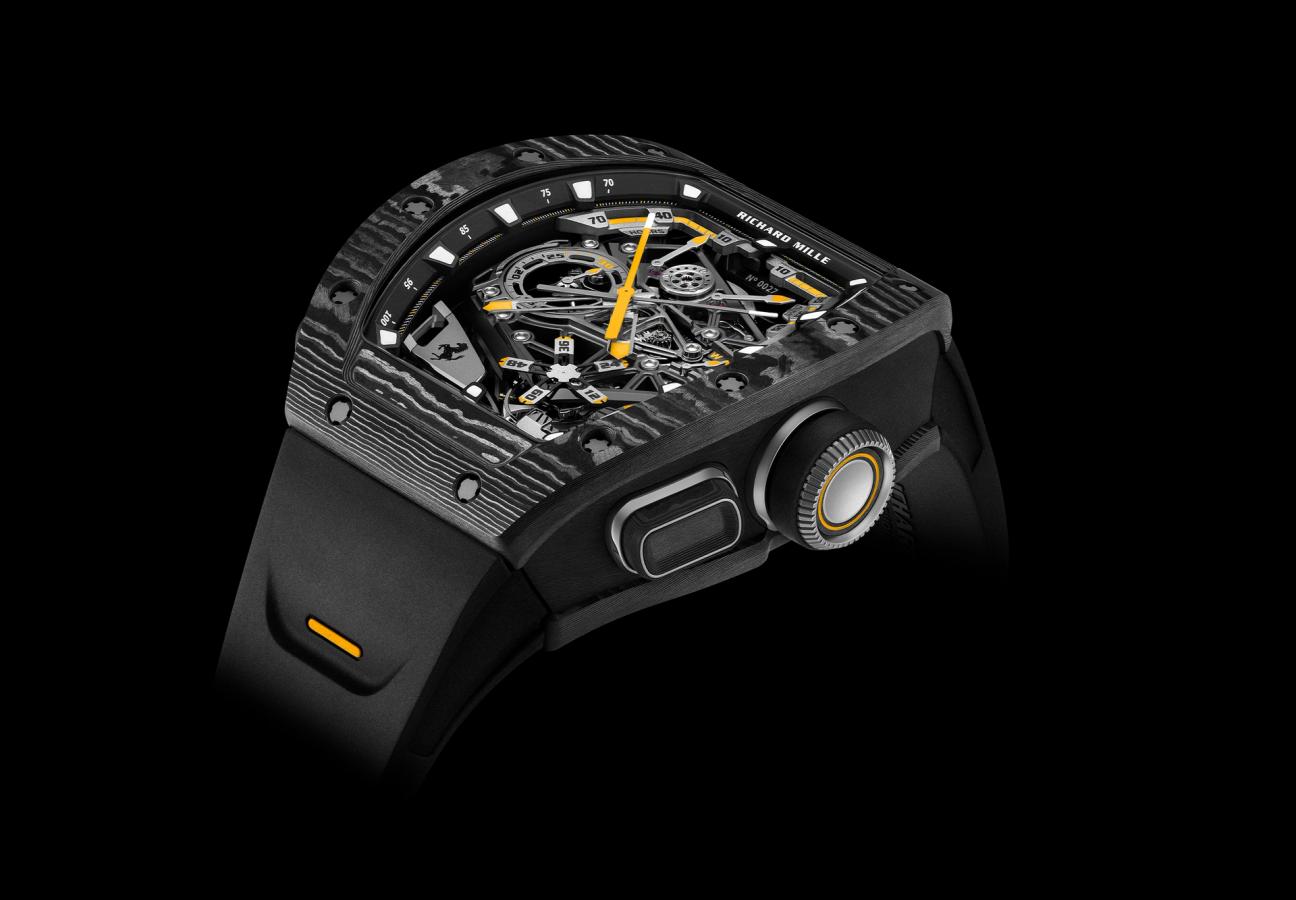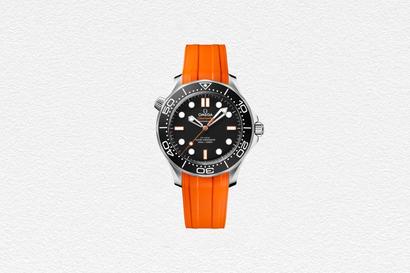

Words: Alex Doak
“Our work is becoming increasingly scientific, which is helping us create components that are even more durable while delivering even better performance.”
Coming from Ferrari F1, that’s a no-brainer. Only it isn’t coming from Ferrari; these are the words of Salvador Arbona, Richard Mille’s technical director in mechanical movement development. Given the Swiss watchmaker’s tech-forward mantra since inception 25 years ago has been “a racing machine for the wrist” it’s an easy mistake to make. It’s also baffling that it’s taken this long for Mille to hook up with the equally iconoclastic Prancing Horse of Modena. Especially when you consider the number of Ferraris jostling for space in the priceless garage of Monsieur Mille himself.

RICHARD MILLE RM 43-01 Manual Tourbillon Split-Seconds Chronograph Ferrari, £POA, richardmille.com
The coherent totality of a Richard Mille watch has since 1999 been famously likened to that of a sporting car’s chassis and engine. Sure enough, switching from Mercedes AMG Petronas (and their IWC watches) to Ferrari’s Formula 1 team, Lewis Hamilton was sporting the preposterously stripped back RM UP-01 while posing next to the last truly analogue supercar of the 80s, the F40 at Maranello HQ in January. The UP-01 blew Piaget, Bulgari and every other extra-thin horloger out of the water with 1.75 millime tres of diaphanous innovation.
Now, the second creation from Mille’s partnership with Ferrari ventures from the ultra-thin to the ultra-theatrical: the £1 million-plus RM 43-01 tourbillon with split-seconds chronograph, which through a creative dialogue between Maranello’s Centro Stile Ferrari and Les Breuleux’s Valgines skunkworks in the Swiss Jura mountains jigsaws grade-5 titanium with RM’s proprietary Carbon TPT to impossible tolerances. In keeping with F1’s mentality, TPT is a lightweight and durable thin-ply composite that means your investment will actually last the course, unlike your fi nicky gold-cased com plications.
Microblasted bridges recall the tough ened matt surface of Ferrari engine covers. Golden hexagonal socket-head screws are a direct nod to the patterns, parts and extruded details found on Ferrari engine blocks and crankcases. While on the front, the clutch wheel of a V8 engine informs the design of the barrel jewel setting. Whether any of this means the boy wonder from Stevenage can ‘wind up’ his contemporaries at the actual wheel, going into his Prancing Forties, remains to be seen.
For more timepiece inspiration, discover the watches we're eyeing up this summer...


